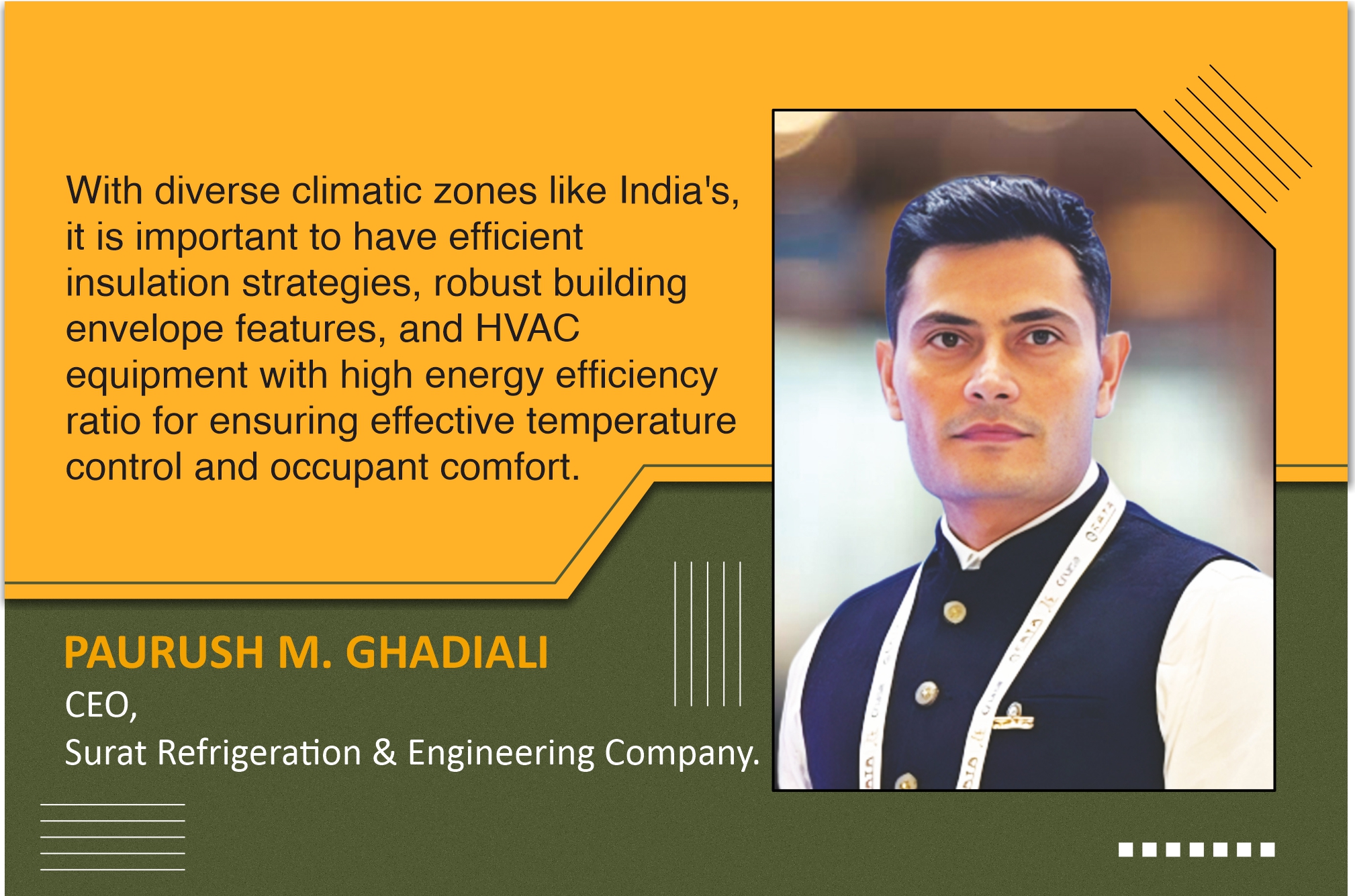Energy-efficient HVAC systems for designing green buildings

This interaction discusses the recommended insulation designs, material selection, HVAC design considerations, and operation systems for energy savings and improved thermal comfort.
Can you walk us through the insulation designs adopted for effective temperature control within buildings to improve cooling efficiency?
Effective insulation can be achieved by using materials like aerated concrete blocks, insulated wall panels, or polyurethane within walls. A double-brick wall with an air gap in between is an effective insulator. Reflective coatings can be applied on exterior walls and roofs to reflect sunlight. Adding vegetation on rooftops creates a natural insulating layer. Cooling efficiency can be improved using expanded polystyrene (EPS) or extruded polystyrene (XPS) insulation boards beneath the roofing material. Other methods include using double-glazed windows with an insulating air or gas layer in between to reduce heat transfer, low-emissivity coatings that reduce solar gain through windows while allowing natural light, tinting windows and applying solar control films to reduce solar heat gain, optimising building orientation to minimise direct sunlight exposure, especially on west-facing walls, and designing for cross ventilation, especially in rooms that face prevailing wind directions.
Please highlight the material selection to ensure thermal comfort and air-conditioning energy savings. How do they differ for hot and cold climatic conditions?
Concrete, brick, or stone with high thermal mass absorption are recommended for hot climatic regions. These store and release heat slowly when the temperature drops. Insulating roofs with materials like polyurethane foam or mineral wool is essential to prevent heat gain. Reflective roof coatings can also help. Glazing can minimise solar heat gain through windows, and shading devices like awnings, pergolas, and louvres help control sunlight, reducing the need for air conditioning.
For cold climatic regions, materials like foam, fibreglass, cellulose, and rock wool are preferred as they minimise heat transfer to the outside of the building, reducing heating demands. Reducing air leaks is essential in buildings in cold climates. Materials that create an airtight seal around the building, like vapour barriers, insulated doors, and high-quality sealing around windows, are essential. Dark-coloured or absorptive roofing materials can also help retain heat in cold climates.
What are your methods for identifying air leaks and deficient insulation systems? And what methods do you adopt to fix these problems?
Besides hand inspection and visual inspection, infrared thermography, smoke testing, and pressure testing of HVAC ducts can be employed to identify air leaks and deficient insulation. Fixing air leaks includes applying weather stripping around movable joints like windows and doors and caulking around stationary components (e.g., door frames) that can seal small gaps. Expanding foam insulation and sealing HVAC ducts using foil tapes or mastic sealants are effective for larger gaps. However, replacing old windows or doors with energy-efficient models greatly affects insulation and energy efficiency.
What building envelope features and heating and air conditioning system design and operation settings should be considered when designing green buildings?
Recommended building envelope features for designing green buildings include high-quality insulation, high-performance windows, thermal breaks, air and vapour barriers, reflective roofs, green roofs, orientation and shading, and natural ventilation. HVAC system designs and operation settings also play an important role in designing green buildings. The recommended HVAC system designs include employing equipment with a high EER, energy recovery ventilators (ERVs), programmable thermostats to optimise operation schedules, and demand-controlled ventilation (DCV) systems that adjust ventilation rates based on occupancy (CO₂ levels in a space). It is also important to use air filters, air purifiers, and low-emission building materials to improve IAQ. The recommended operation settings include schedulers for appropriate heating and cooling temperature set points, facilitating significant energy savings, and implementing seasonal adjustments and adaptive controls.
For more details, visit: https://suratref.com/
Cookie Consent
We use cookies to personalize your experience. By continuing to visit this website you agree to our Terms & Conditions, Privacy Policy and Cookie Policy.










